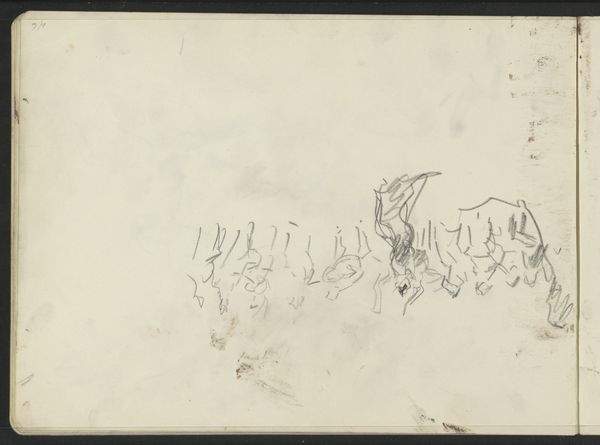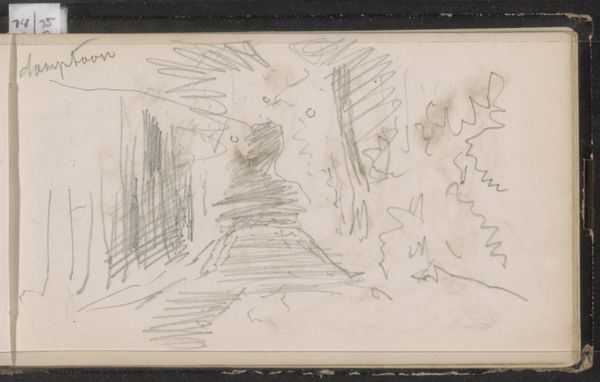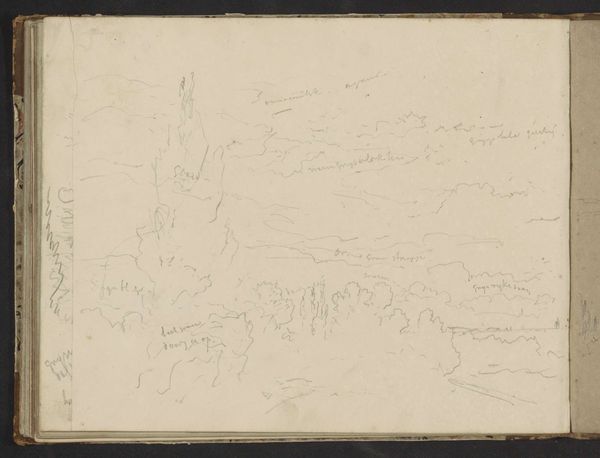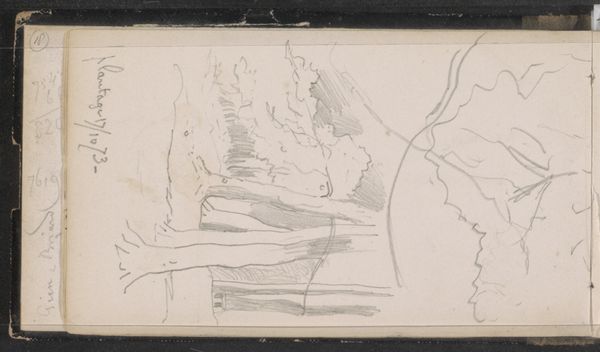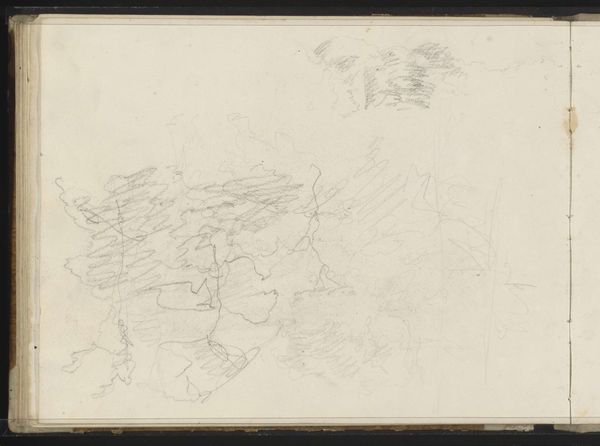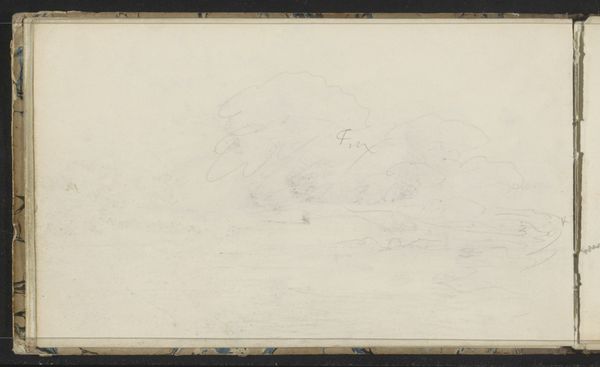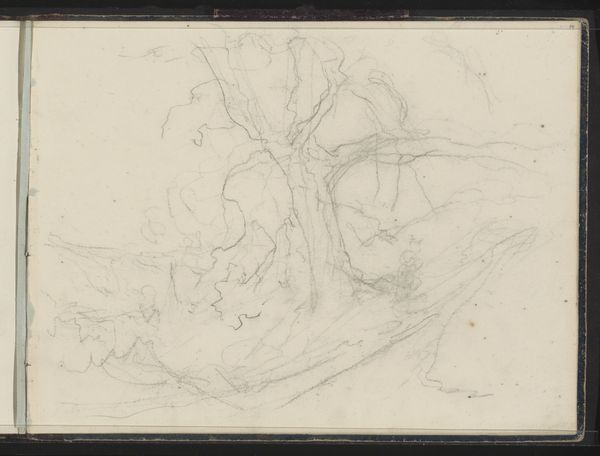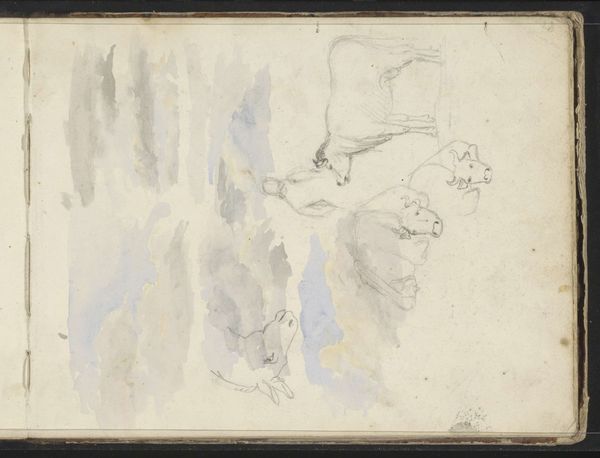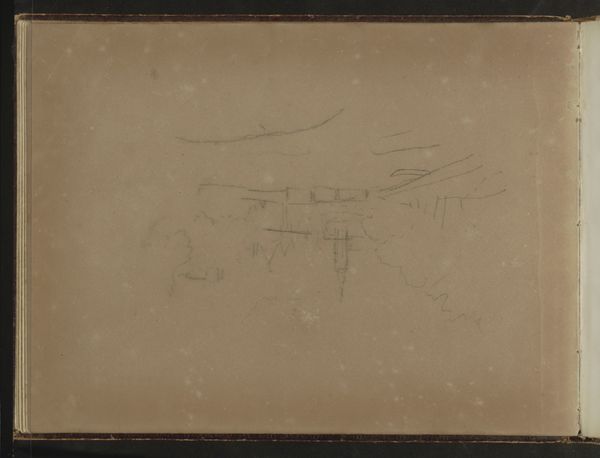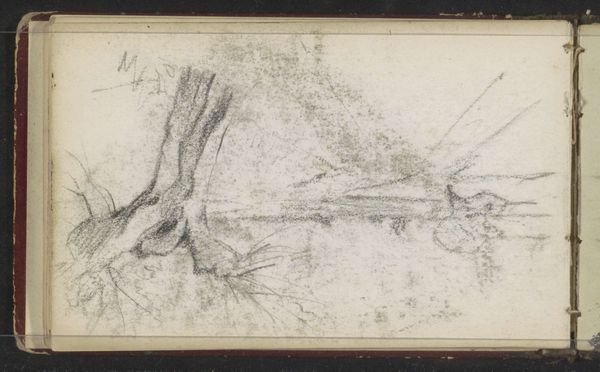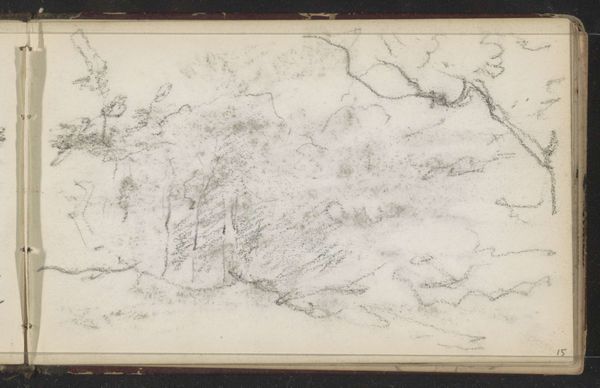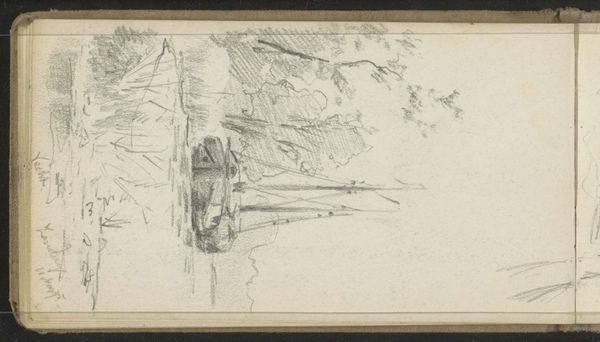
drawing, paper, pencil
#
drawing
#
landscape
#
paper
#
pencil
#
line
#
watercolor
Copyright: Rijks Museum: Open Domain
Curator: What we have here is "Bos," a drawing by Johannes Tavenraat, dating from around 1873 to 1876. It's rendered in pencil on paper, and the museum currently holding this artwork is the Rijksmuseum. What strikes you about this initial sketch? Editor: It feels… tentative. Like a memory struggling to solidify, or a dreamscape fading into daylight. The lines are so light, so ephemeral. It's almost as if the artist captured a breath, a fleeting impression, rather than a solid reality. Curator: That’s quite perceptive. I believe the use of the 'line' style, typical for sketches, contributes to the dream-like feel. Given Tavenraat's known aptitude for landscape, can you see any underlying motifs at play here? Is the subject alone enough to explain this sensation? Editor: Well, even in its unfinished state, you can see the bones of a pastoral scene—trees, implied water—but that's not quite enough, in my view. Perhaps the drawing has allegorical elements? There is that very prominent tree in the middle. For me it has that mythological association of being 'The Tree of Life', the force behind everything Curator: That is certainly interesting. It invites us to think about those associations. In certain traditions, of course, trees are conduits, connecting the earthly with the divine or subconscious. With all those factors at play here, one could propose an interpretation that links what one perceives as light "lines" and its capacity to elicit a spiritual sentiment. Editor: Perhaps it also reflects a transitional moment for the artist himself? The lightness almost has the characteristic of shedding and change, the exact way trees shed leaves, that eventually become an unrecognisable matter. So is a memory that with time changes with all things we live, and perhaps becomes more and more blurred. Curator: This idea certainly holds weight within Tavenraat's personal history; art can hold immense biographical relevance for any author. The piece in and of itself possesses its own subtle allure by depicting elements of our experience, our memory and understanding of change. It presents an opportunity to contemplate that continuity and adaptation in life. Editor: Beautifully said! Looking at it again, I find myself less caught up in the incompleteness and more drawn to its tranquility. The lack of definition, in a weird way, liberates it. Maybe it invites you to write the end of its story, the ending Tavenraat did not have the chance to explore. Curator: Yes! Leaving things undefined grants a form of artistic freedom. It leaves much for its spectators to wonder and reimagine.
Comments
No comments
Be the first to comment and join the conversation on the ultimate creative platform.
